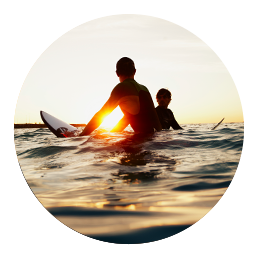 Shark activity map
Shark activity map
Switch on your Sea Sense.
Read more
Latest shark advice and warnings.
Read More










News & Alerts
New insight into white shark behaviour
07 April 2016- Research data released from nearly 180,000 detections of tagged sharks
- Tagged sharks monitored by satellite-linked and data-recording receivers
- Information helps to build picture of shark movements in WA
A seven-year shark monitoring research program has provided a wealth of valuable data on white shark activity off the Western Australian coast.
Fisheries Minister Joe Francis said the $3 million State Government-funded project recorded nearly 180,000 shark detections by receivers from Ningaloo to Esperance.
“More than 22,000 of those detections were from 64 tagged white sharks. While most were detected at offshore locations, some white sharks came close to shore, but generally only for periods of a few hours to a few days,” Mr Francis said.
“The most frequent detections along the Perth coast were at the northern end of Garden Island and across Gage Roads, while greater numbers of white sharks were detected off Perth during spring and early summer.”
The research also showed the movement of white sharks was mostly uncoordinated which made it hard to predict when humans might encounter them.
“If tagged sharks come close to the coast in areas monitored by satellite-linked receivers, a near real time alert will be automatically posted on the SharkSmart website and the Surf Life Saving WA Twitter Feed, and also sent by SMS to lifeguards and beach managers,” the Minister said.
“WA has been a world leader in setting up this infrastructure, which complements broader Government shark safety measures including aerial and beach patrols, a shark response unit and beach enclosures.
“The valuable information collected through this project will be shared with the CSIRO and other research collaborators to enable more detailed analysis of the data, and could also help in the development of future mitigation programs.”
Fact file
- Data was gathered from 309 shark detection receivers from Ningaloo to Esperance, as well as 25 satellite-linked receivers which send near real time website, Twitter and SMS alerts
- More than 860 sharks, including more than 220 white sharks, have now been tagged
- For more information on shark hazard mitigation, visit https://www.SharkSmart.com.au
See helpful Q&As here
See the detailed research report FRR 273 here
Minister's office - 6552 6500